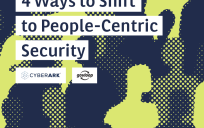This post is an excerpt from our recent report with DataStax, Powering Growth and Innovation for Hybrid Cloud. To download the full report, head here.
One of the ways federal agencies are modernizing their systems is by equipping staff with cloud computing capabilities. Accelerating cloud adoption is critical to any agency’s ability to maintain a long-term strategic advantage and meet mission needs.
Unfortunately, moving workloads to the cloud is not so simple for agencies that have multiple facilities, sensitive data related to national and infrastructure security, and a variety of users with varying access levels. For agencies to integrate these silos and keep data secure and accessible while still accomplishing their mission, a hybrid approach is the answer.
A hybrid cloud system allows on-premise and cloud resources to function together and will be the path forward for your agency.
Below are some best practices to get started and overcome the more common challenges associated with moving to a hybrid cloud system.
1. Make sure you put pen to paper in terms of defining your cloud needs
“It’s critical that agencies are stating and defining security policies, adequately formulating service level agreements and putting pen to paper,” Cox said. These areas tend to not be very well-defined, which causes obstacles, so you must work to define with all users and stakeholders what needs and expectations your agency has.
2. Develop requirements
After you know your agency’s needs and security levels, you must develop your actual requirements for the hybrid cloud system. This can often be a unique challenge because legacy systems must be translated into cloud-based ones. To get started, first think critically about what’s most important to your organization and establish a set of principles and requirements that are essential to your agency’s mission.
3. Create an enterprise-level data governance strategy
“Good data governance is critical in moving to the hybrid cloud,” Cox said. Your agency should work to create an enterprise-level data environment that works across systems and agencywide. This includes deciding processes, roles, standards and metrics that ensure the effective and efficient use of data and information in enabling your agency to achieve its mission.
4. Move to proper data management via an enterprise data layer
This move empowers enterprises to unlock the full potential of their multi- and/or hybrid cloud strategies to achieve data autonomy while scaling efficiently, effectively and safely. A modern enterprise data layer gives you data autonomy, or the ability to retain complete control over your data no matter where it resides. As a result, efficiency increases, accelerating innovation and helping your agency make better decisions and better serve users.
5. Find the right database for your hybrid cloud needs
Agencies need a distributed, hybrid cloud database that offers consistency, flexibility and capability in the form of real-time data and 100 percent uptime, or their hybrid cloud strategy simply won’t work.
To learn more about ways your agency can benefit by moving to a hybrid cloud system, download the full report here.






Leave a Reply
You must be logged in to post a comment.